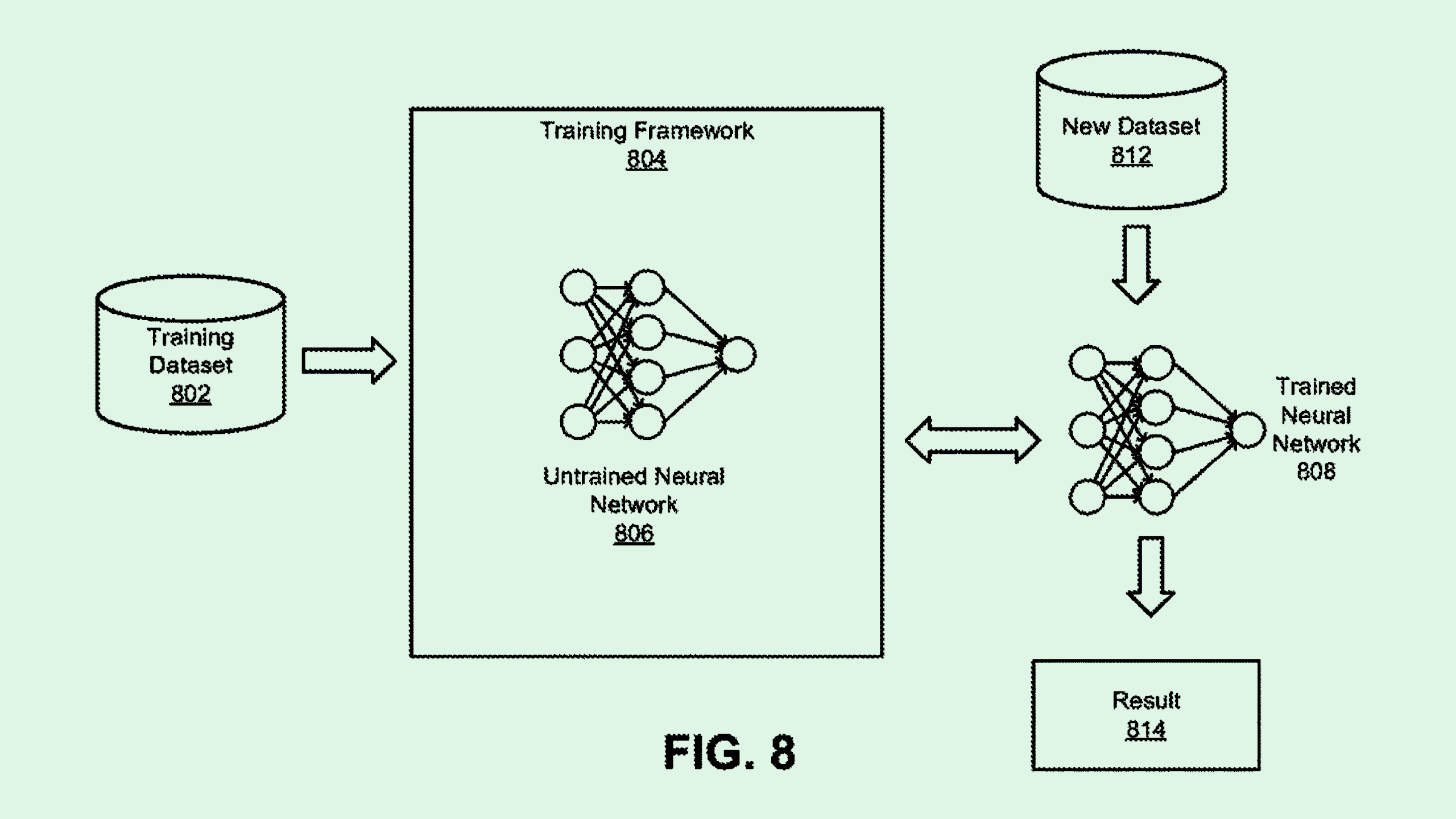Nvidia’s Neural Network Patent Adds to AI Software Expansion
Nvidia may use AI to troubleshoot its games with its patent to analyze and respond to feedback using neural networks.

Sign up to uncover the latest in emerging technology.
Nvidia wants to use AI to troubleshoot its problems.
The chip manufacturer is seeking to patent a system for “analyzing feedback” using neural networks. Nvidia’s tech essentially takes the grunt work out of responding to and rectifying any user-reported issues that may come up in an application.
“Relying on humans to review and process all this feedback can be a very time-consuming and resource-intensive process, which can also result in significant delays in correcting any problems indicated through that feedback,” Nvidia said. “Further, accurately analyzing such feedback typically requires processing by an engineer.”
Nvidia’s system uses multiple AI models to field textual feedback from users. Before being used as input, the text goes through “pre-processing” to get the gist of what the user is asking and purges it of insignificant words or explicit content.
The feedback may then go through two different machine learning-based extractors, one analyzing the features of the text and another to analyze “session information,” meaning details within the application that lead a user to complain. This information is finally passed off to another neural network in charge of deciding if anything can be done about the user’s feedback, such as if it’s an individual problem or representative of a system-wide issue.
Nvidia’s filing details how this may be used in the context of cloud gaming: For example, if a user asks “why is this game so unstable,” the system would use natural language processing to understand what the text says, analyze the data from the user’s game, then determine if the problem is on the user’s end or Nvidia’s and what can be done about it.
While gaming is used as a primary example in Nvidia’s patent, these filings are often non-limiting, allowing companies to apply their tech beyond the scope of the examples provided. With this patent in particular, Nvidia may have created an AI-based solution for the overworked IT department.
The patent application adds another to the pile that Nvidia has filed in an attempt to gain dominance over AI software innovations. Some of its research includes using deep learning to infer emotion from “speech in audio data,” “automatic generation of ground truth data” for object detection, and a way to fine-tune chatbots with “natural language expressions.”
Investing resources into this kind of research and development on the application side allows Nvidia to stay ahead of its competitors, said Romeo Alvarez, director and research analyst at William O’Neil. “While companies like Intel and AMD are still trying to ramp up the production of their respective AI accelerators, Nvidia is strategically investing in the development of new applications for its AI hardware,” said Alvarez.
Nvidia has gained a major lead in the AI race over the past year, with its GPUs and development ecosystem taking the industry by storm. Its data center revenue (which includes its AI work) in the third quarter reached $14.51 billion, up 279% year over year, and analysts expect the company to report even further revenue growth in its earnings later this month.
Amid the hype, shares have jumped more than 40% since the start of 2024 and the company’s market cap has skyrocketed, bringing it to the verge of overtaking Amazon as the fourth most valuable company.
However, Nvidia may soon turn its sights toward expanding outward: The company last week announced a partnership with Cisco to help enterprises build their own in-house AI computing infrastructure, aiming to go beyond its datacenter prowess. It also is reportedly entering a $30 billion market with a new business unit focused on bespoke chips for cloud computing firms.
This news and its patent history may signal that Nvidia looks to be more than just a one-trick pony — even if that trick has bought the company skyrocketing revenue — as more companies look towards alternatives for its pricey AI chips.











